press space to activate engine failure
LOT Polish Airlines Flight 5055 was a scheduled international passenger flight from Warsaw to New York City. In the late-morning hours of 9 May 1987, the Ilyushin Il-62M operating the flight crashed in the Kabaty Woods nature reserve on the outskirts of Warsaw around 56 minutes after departure. All 183 passengers and crew on board were killed in the crash, making it the deadliest accident involving an Ilyushin Il-62, and the deadliest aviation disaster in Polish history.[1]
The accident was determined to have been caused by the disintegration of an engine shaft due to faulty bearings. This led to a catastrophic failure of the two left engines and then an onboard fire, both of which eventually destroyed all flight-control systems.[2]
Aircraft
The aircraft was a 186-seat Ilyushin Il-62M built in the third quarter of 1983, registered SP-LBG and named after Tadeusz Kosciuszko, a Polish military leader and national hero.[3][1][4] The Il-62 has four tail-mounted engines, with two on the left side (numbers 1 and 2) and two on the right side (numbers 3 and 4). The proximity of the two pairs of engines would prove critical during the accident sequence.
Passengers and crew
Nationality Passengers Crew Total
Poland 155 11 166
United States 17 0 17
Total 172 11 183
All of the crew members were Polish. The captain, Zygmunt Pawlaczyk [pl], was 59 years old, with 19,745 flight hours' experience (5,542 on Ilyushin Il-62s), and a captain of the type from 11 May 1978. The first officer, Leopold Karcher, was aged 44. The remaining flight crew were flight engineer, Wojciech Klossek, aged 43, flight navigator, Leslaw Lykowski, aged 47; a 43-year-old radio operator, Leszek Bogdan; and Ryszard Chmielewski, a 53-year-old trainer of flight engineers on a routine observation of his progress. Five flight attendants were on board; one was stationed in the technical cabin bay, between the engines, and probably either lost consciousness and burned in the fire or was sucked out of the aircraft after decompression; her body was never found despite an extensive search.[5][6]
Of the 172 passengers on board, 155 were from Poland, while the other 17 were from the United States.
Accident summary
This section needs additional citations for verification. Please help improve this article by adding citations to reliable sources in this section. Unsourced material may be challenged and removed. (July 2020) (Learn how and when to remove this message)
Memorial to the crash victims
The chartered aircraft to New York City took off from runway 33 at Okecie Airport at 10:18 AM. The flight was to continue on to San Francisco after refueling in New York. The pilots were cleared to climb to 31,000 ft (9,400 m), on a course set to Grudziadz VHF omnidirectional range (VOR), which was reached at 26,500 ft (8,100 m). Soon after Flight 5055 took off from Warsaw, the crew was instructed by air traffic control (ATC) to climb to an altitude of 18,000 ft (5,500 m) as quickly as possible:
10:26 Flight 5055 Well, we go to New York, possibly we'll be able to get to flight level 180... (tongue-in-cheek)
10:26 Okecie ATC Gentlemen! You won't make it. You have about 5 km (3.1 mi) to the TMN [Tango-Mike-November route]. I told you that clearance was set for 180 or higher. Military planes are training there. I have no communication with them to allow separation.
10:26 Flight 5055 Roger that. Roger that.
Okecie ATC Keep it at one hundred and sixty. You're on your way to TMN now. Further ascent will be from the area. For now, frequency one thirty-four point eighty-seven. Goodbye. Speak soon.
10:27:50 Flight 5055 I understood. See you later. Speak soon. LOT 5055.
Flight 5055 Warsaw radar. Good morning. LOT 5055.
Flight 5055 5055. We've passed the TMN by twenty-seven. We maintain the level of one hundred and sixty and predict Grudziadz at forty.
10:31:35 Area Control 5055, heading 310, immediately cut flight level 170 [17,000 ft (5,200 m)].
10:31:39 Flight 5055 5055, heading 310.
10:31:41 Area Control Climb immediately. I mean it, immediately.
At that moment, the crew applied maximum thrust on the engines to climb to 18,000 ft (5,500 m). Nine minutes after the thrust was applied, as the aircraft had just passed Lipinki village, near Warlubie (near Grudziadz), at 8,200 m (26,900 ft), at a speed of 810 km/h (440 kn; 500 mph)), the faulty bearings inside the number 2 engine reached temperatures of about 1,000 °C or 1,800 °F and exploded, destroying the shaft. The turbine disc on the burning engine separated from the destroyed shaft; the freed disc spun to an enormous speed, and within seconds, exploded. Debris from the explosion violently spread around, puncturing the fuselage, severing flight controls and electrical cables, and causing severe damage to the adjoining engine number 1—the outer left one, which soon also started to burn. A piece of hot debris burst into cargo hold number 4 and caused a rapidly spreading fire; the inner left engine burned rapidly until impact.
Immediately, the crew noticed that the elevator control systems had failed—only the pitch trim remained operative—and that two engines were disabled. The reasons for this were unknown to the crew; they initially suspected that the aircraft could have been hit by something, possibly another aircraft. The pilots started an emergency descent to 13,200 ft (4,000 m). The closest airport where the Il-62 might land was Gdansk, but landing there was not possible because the crew could not dump enough fuel for the emergency landing attempt (the takeoff weight of the aircraft on that day was 167 tons, until 10:41 about 6 tons of fuel were consumed; the maximum landing weight of the Il-62M was 107 tons), so they turned their heading to Okecie, instead. Due to the damaged electrical system, the crew had problems with fuel dumping, and they did not realize that the fire had spread to the cargo holds in the back of the aircraft (cargo holds 4 and 6), and in the final minutes probably spread into the passenger cabin.
Initially, the crew intended to land at the military airport in Modlin, but at the final moment, they decided to return to Okecie, which had better emergency equipment. Why the crew decided to continue the flight to Warsaw was initially unclear at the time, given the rapidly spreading fire and lost flight controls, rather than land as quickly as possible at Modlin. Modlin's emergency equipment was not as good as Okecie's, but still good enough to deal with an emergency landing of an airliner with an in-flight fire. Many at the time believed officials had decided the airliner must not land at a military airport and (contrary to official reports) denied the crew's request to land at Modlin. While this is somewhat plausible, no conclusive evidence supporting this theory was ever presented. Instead, the cause was later determined to be the damage to the electrical systems preventing both the fire detectors in the cargo hold and inside the engine from working properly (on the cockpit voice recorder (CVR), an engine fire warning was heard shortly after the explosion, but it later faded out; the signal reappeared less than four minutes before the crash and continued until impact), so Cpt. Pawlaczyk did not know about the magnitude of the fire in the hold and how quickly it was spreading, nor about the burning engine when he decided to fly to Warsaw.
At 10:53, fuel vapors that had drifted into the burning cargo from the damaged fuel tanks exploded.
The passengers were fully aware of the emergency; 58-year-old passenger Halina Domeracka managed to write on the opening page of her New Testament: "9.05.1987 The aircraft's damaged... God, what will happen now... Halina Domeracka, R. Tagore St., Warsaw..."[7][8][9][10]
CVR fragment—the moment of engine explosion
10:41.28 Commentary Intermittent acoustic signal of autopilot disengagement
10:41:30 Crew Hey! Pressurization!
10:41:32 Commentary Acoustic ringing signal of cabin decompression
10:41:34 Crew Is there a fire? What's going on?
10:41:35 Crew Probably a fire.
10:41:37 Crew Engine? Shut it down!
10:41:39 Crew ...shut down. That first one is burning!
10:41:42 Crew ...fire...
10:41:44 Crew ...all small [referring to engines' throttles]
10:41:45 Crew Warsaw?
10:41:46 Crew ...all small. Decompression.
10:41:48 Crew Two engines are gone!
10:41:49 Commentary Continuous acoustic signal of engine fire.
10:41:50 Crew Two engines are gone! [...] Shut down... [...] We're turning around! Fire!
10:41:55 Crew Danger!!! Warsaw radar LOT! Warsaw radar! [calling flight control]
The crew tried to land at Okecie from the south (due to strong wind) and turned the aircraft 180° to runway 33, but the rapidly spreading in-flight fire, which spread to the exterior of the aircraft (which was trailing a huge flame and dense black smoke), caused a total failure of surviving flight controls, including the pitch trim. The landing gear also was not functioning. The emergency fuel dumping pumps were also malfunctioning; sometimes they stopped functioning at all, only to resume dumping fuel minutes later. At the moment of the crash, around 32 tons of fuel were still in the tanks. A turn to the left was started at 11:09 at 4,900 ft (1,500 m) with an airspeed of 480 km/h (300 mph), during which both the CVR and flight data recorder stopped recording.[citation needed] At the moment the aircraft passed the village of Józefoslaw, about 10 km (6.2 mi) from the airport, several burnt-out elements of its fuselage fell out, starting local fires on the ground. Supposedly, at this moment, the fire destroyed the pitch trim controls. When the aircraft passed the town of Piaseczno, it went into a sinusoid-shaped flight for the final seconds and nose-dived with a slight 11° left bank and 12° pitch downwards, crashing into the ground at 475 km/h (256 kn; 295 mph) and exploding into pieces in the forest 5,700 metres (18,700 ft) (about 3.5 miles (5.6 km)) from the Warsaw airport runway. (Fire from the cargo hold was found to have spread into the rear part of passenger cabin, causing mass panic; the passengers moved towards the nose of the aircraft, away from the fire, destabilizing the aircraft and causing the dive.[citation needed] The fire also deformed the aft fuselage, which—combined with strong forces acting on the empennage—altered the aircraft's angle of attack and contributed to the rapid dive.)[citation needed] The wreckage was scattered over a rectangular area, roughly 370 by 50 metres (1,210 by 160 ft).
11:09:47 Okecie Tower From your current position you have about 15 km (9.3 mi) to the runway.
Crew Understood
Crew ...[turn] to the left! Engines to the left!
11:10:13 Tower 5055, to the left, to the left zero-five-zero.
Crew OK.
11:10:40 Tower 5055, to the left, course 360.
Crew We want to turn. That's just what we want. [implied meaning: "we're trying"]
Tower Keep turning, turn to three-six-zero. Now you have about 12 km (7.5 mi; 6.5 nmi) to the runway.
Crew OK.
11:11:02 Tower 5055, to the left, course 330.
Crew We are turning to the left.
Tower Start final approach about 11 km (6.8 mi; 5.9 nmi) from the runway.
Crew We will do all we can.
Tower Understood.
Tower [Turn] to the left, course 320.
Crew Understood.
11:11:34 Tower You've come to the right hand side of the runway centerline, continue left, course 300.
Tower Wind is 290 degrees, 22 km/h (14 mph). You are cleared for runway three-three.
Crew OK.
11:12:10 Commentary Transmitter turned on four times; fragments of unintelligible utterances
Crew Good night! Goodbye! Bye, We perish.
The last words inside the cockpit recorded by ATC at 11:12:13 were: "Dobranoc! Do widzenia! Czesc, giniemy!" (Eng. Good night! Goodbye! Bye, we're dying!). All 172 passengers and 11 crew died as the aircraft broke apart and crashed
Specifications
General Characteristics
- Predecessor a fuselage for your plane FREE to use
- Created On Windows
- Wingspan 80.1ft (24.4m)
- Length 113.2ft (34.5m)
- Height 31.6ft (9.6m)
- Empty Weight 82,007lbs (37,198kg)
- Loaded Weight 93,972lbs (42,625kg)
Performance
- Power/Weight Ratio 2.869
- Wing Loading 82.6lbs/ft2 (403.3kg/m2)
- Wing Area 1,137.6ft2 (105.7m2)
- Drag Points 22880
Parts
- Number of Parts 377
- Control Surfaces 5
- Performance Cost 2,076

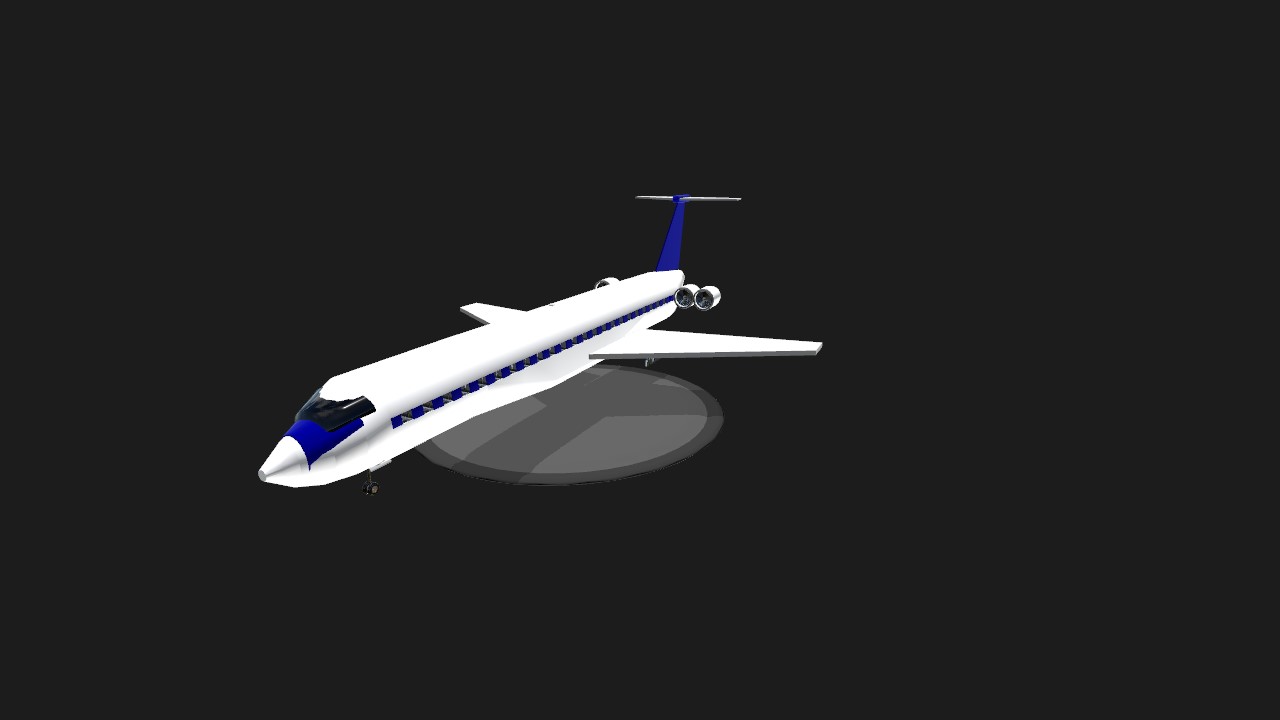
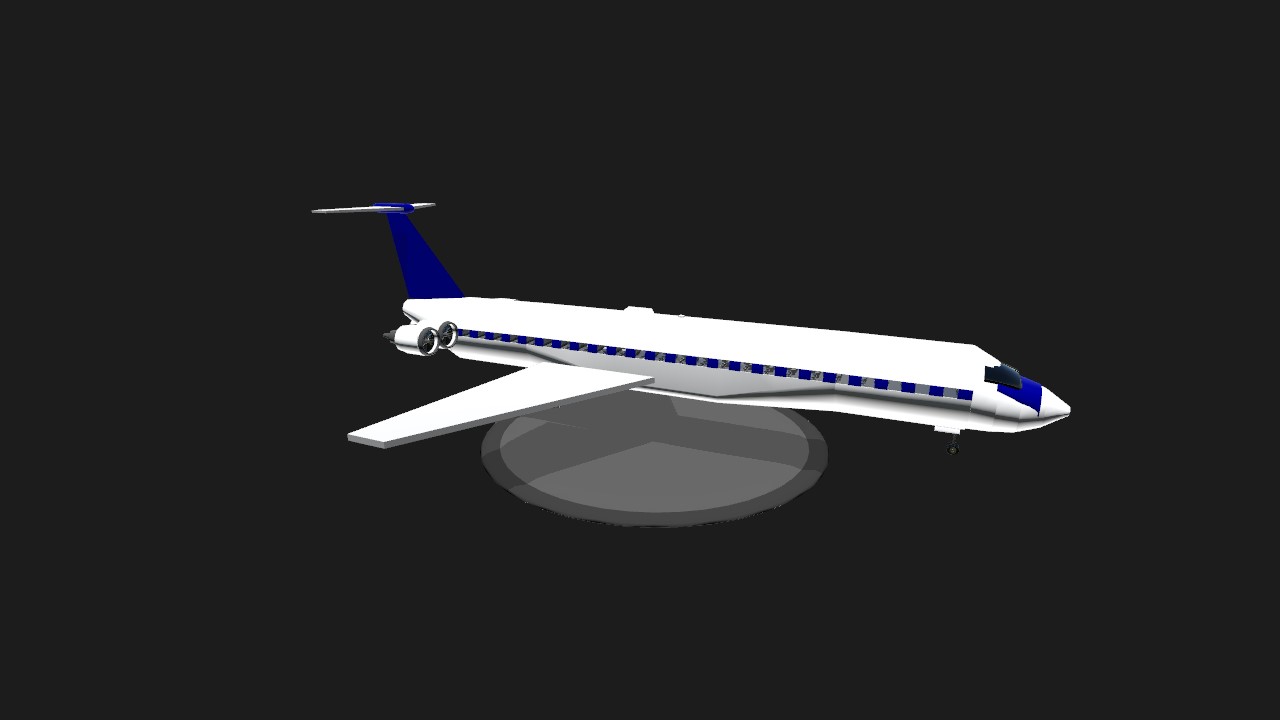

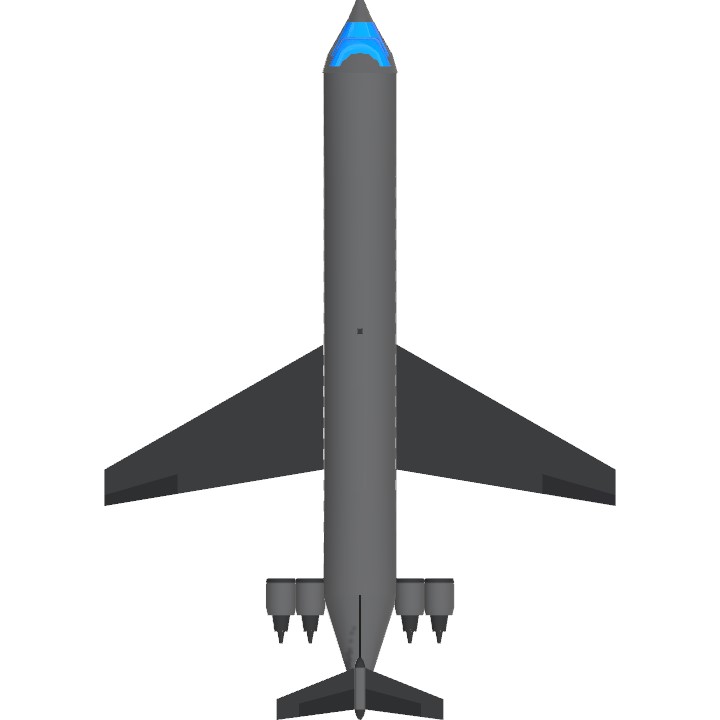
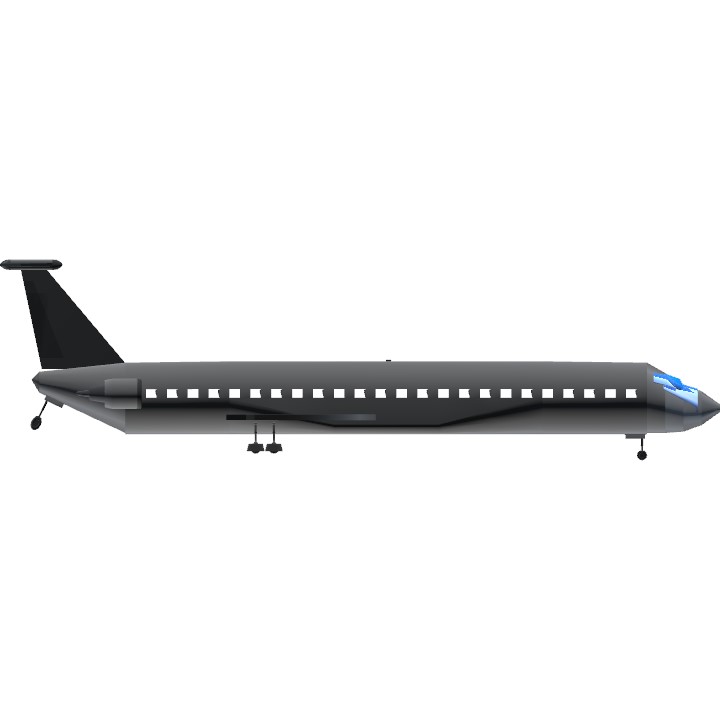
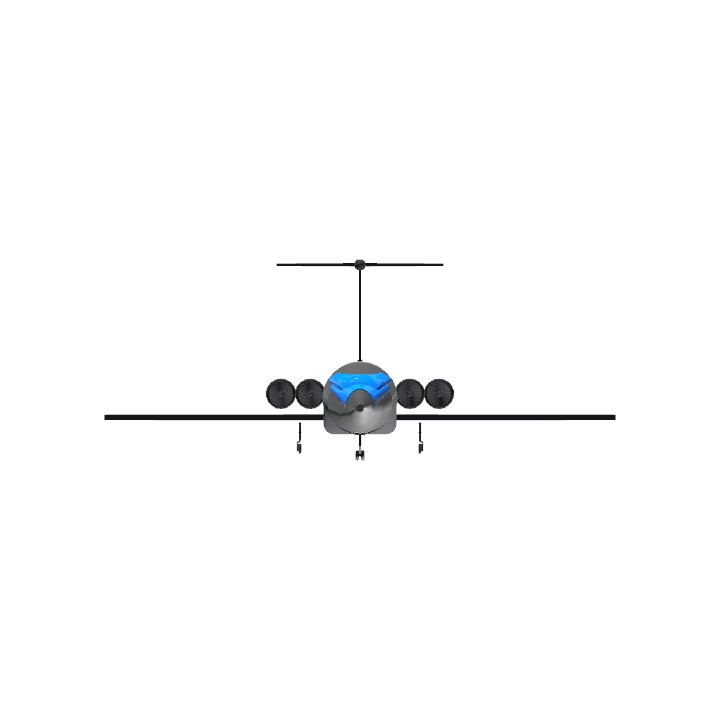
@Trainzo thanks
Nice build .